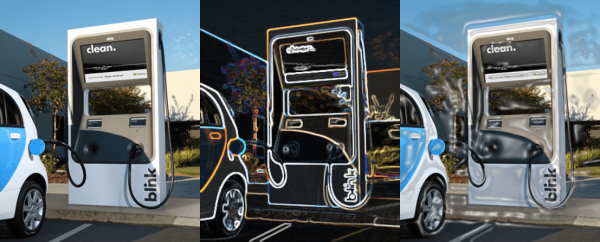Every great idea comes with the complaints of other ideas. The $768 million electric car infrastructure strategy is no different. A few people have concerns with the new plan and the allocation of funds, which is causing a bit of unrest. Not even the reassurance you get from the best traffic school California can offer will soothe these electrified opinions.
Here’s the Plan
The major players in the electric vehicle infrastructure plan consists of three familiar utilities: Pacific Gas & Electric, San Diego Gas & Electric, and Southern California Edison. Together, these three utilities are fronting the $768 million to fund the infrastructure that will be built throughout California.
The San Francisco Chronicle stated:
Pacific Gas and Electric Co. will spend up to $22.4 million installing the infrastructure for more than 230 direct-current fast-charging stations, which can add 50 to 70 miles of range to a car’s battery in 20 minutes.
The utility will also spend $236.3 million on infrastructure and rebates to support electric trucks, buses and other medium or heavy-duty vehicles… [SCE and PG&E] are expected to help install chargers at more than 1,570 sites, supporting 15,000 medium- or heavy-duty vehicles such as municipal and school buses.
San Diego Gas & Electric Co. will provide rebates for as many as 60,000 customers to install home charging stations and offer installation services.
The major target is large, gas guzzling vehicles. The California Public Utility Commission (PUC) declared that 40% of the state’s greenhouse gas emission was the result of transportation. Large vehicles that consume gas are now on the chopping block to get a shocking transformation. Literally!
This infrastructure is created to incentives consumers and transportation industries to switch over to electric vehicles. By building the infrastructure, the PUC hopes to spur the next great wave of electric cars on the roads. It would also be nice having less smog in the morning.
However, with all the infrastructure plan heating up, residents are still not sold on the idea.
The People’s Problem
The infrastructure upgrade is leaving EV owners to rejoice in the news. However, some residents think the funds could be allocated better. One resident expressed concerns about the success of investing in EV by stating, “A superior expenditure would be upgrading the standard rail system in California and re-building critical portions of the system for high-speed standard railroad.” While others suggest that funds could be spent on “pav[ing] a lot of streets.” This sounds like the opinions of non-electric vehicle owners.
The concerns for the EV infrastructure has some questioning whether consumers will adapt quickly enough. The International Energy Agency (IEA) states that “the numbers are all trending positively, but likely not positively enough. Policy changes are needed to spur faster electric vehicle adoption.” With the California Public Utility Commission unanimously voting to invest nearly $1 billion into their electric vehicle infrastructure, more states could follow. Especially if this incentivizes more consumers to purchase electric vehicles, causing a higher demand for the infrastructure.
Throughout the world, more and more countries are increasing their usage of electric vehicles. It’s a shocking time for the auto-industry. Slowly, but surely, electric vehicles are finding their trend among businesses and independent consumers.
- For information About How to Register a Car in California, click: How to Register a Car in California

 Live Chat
Live Chat






